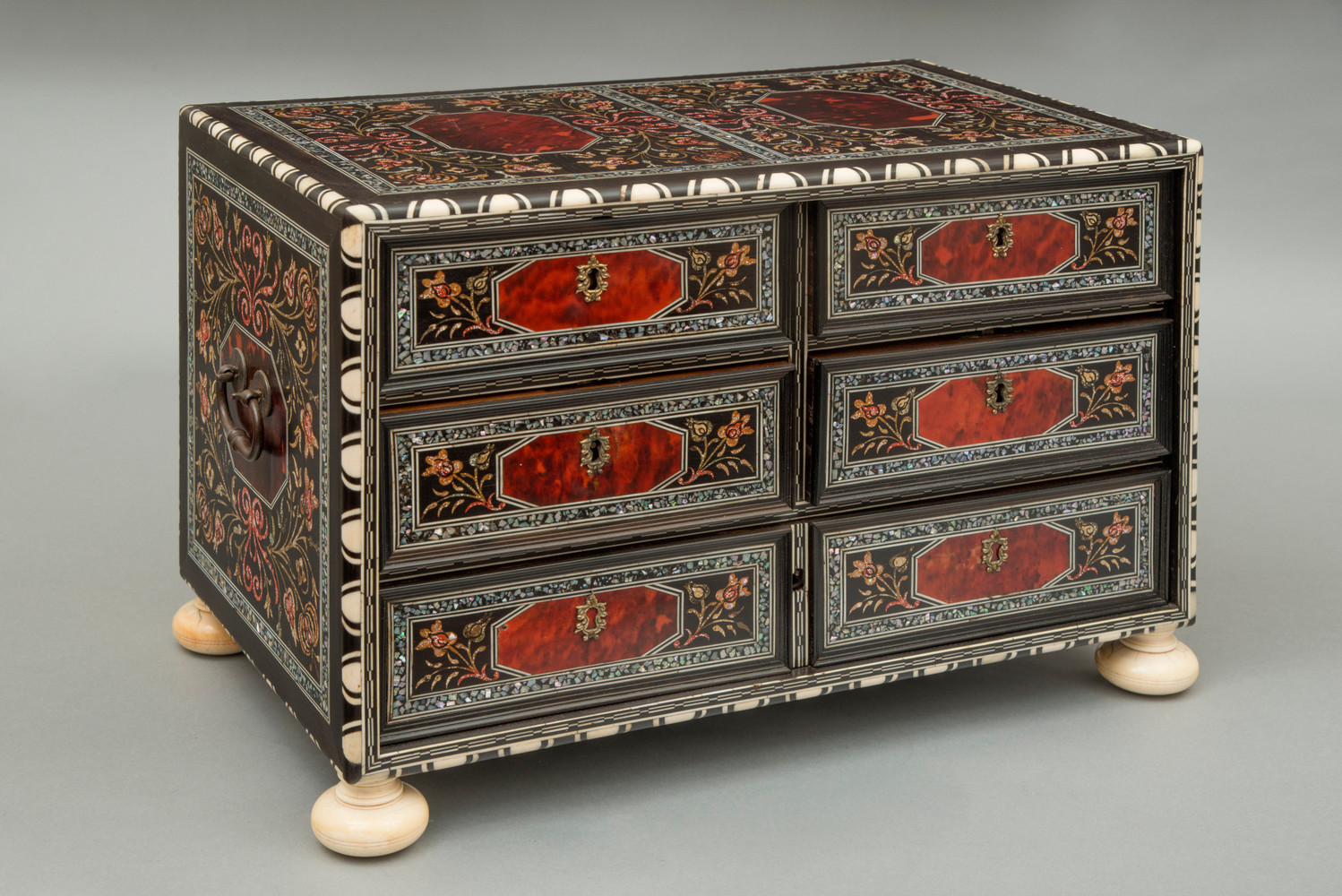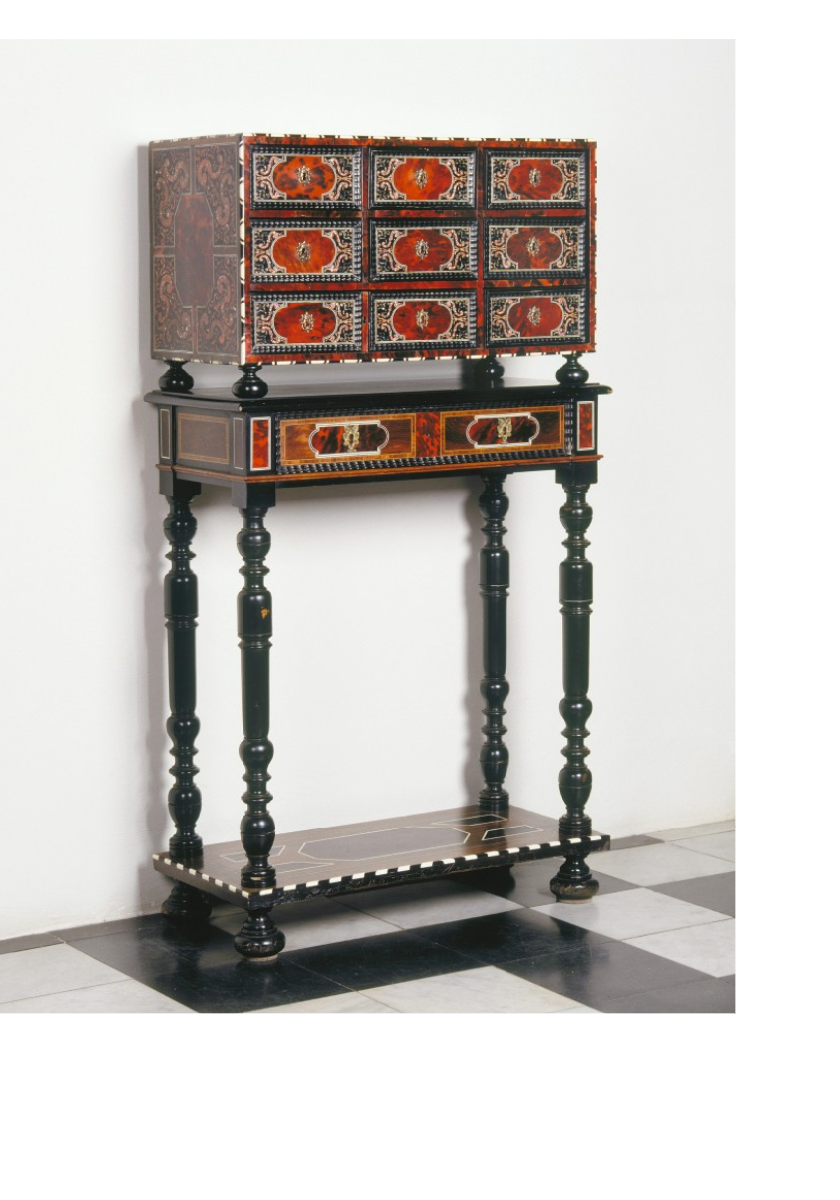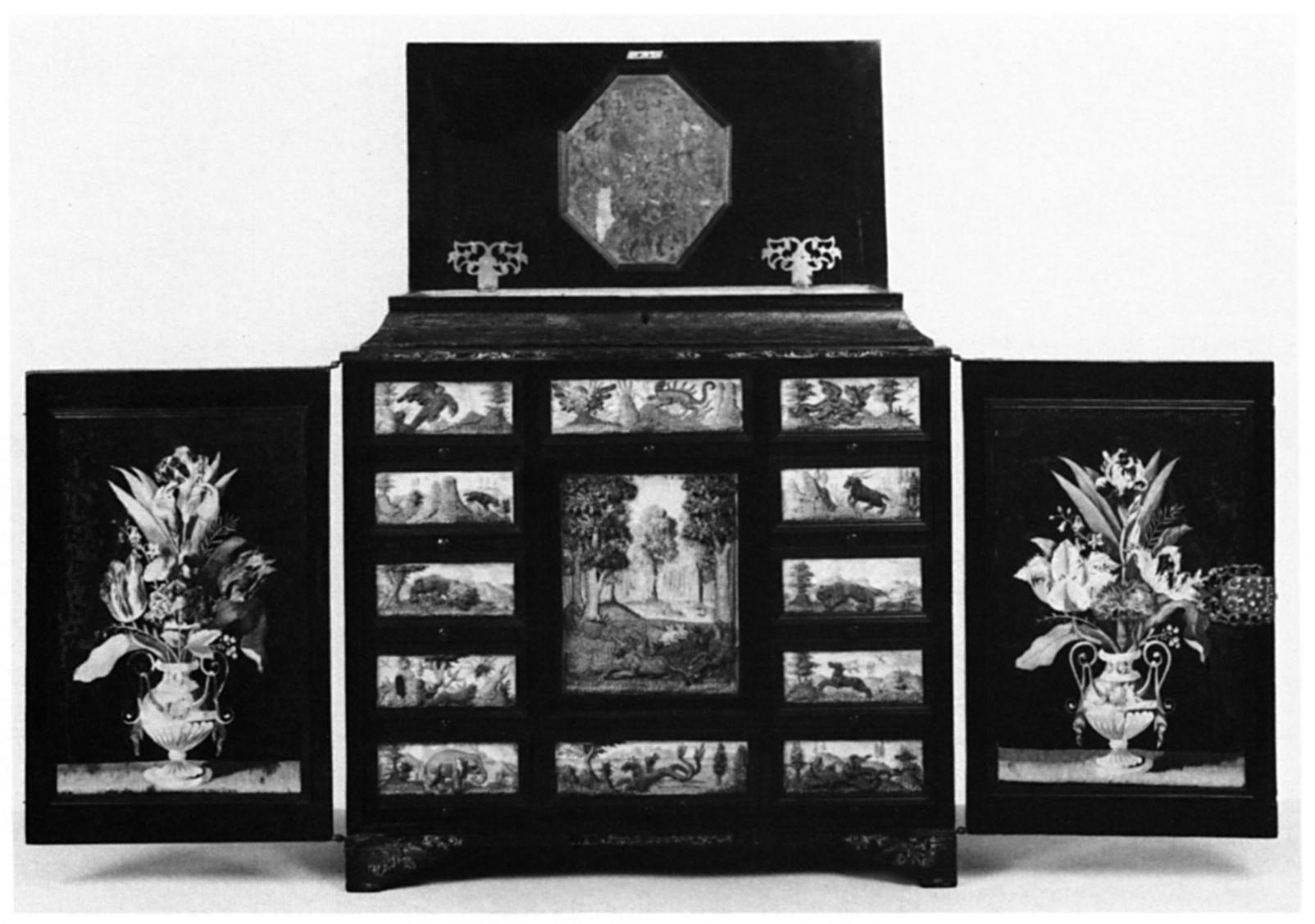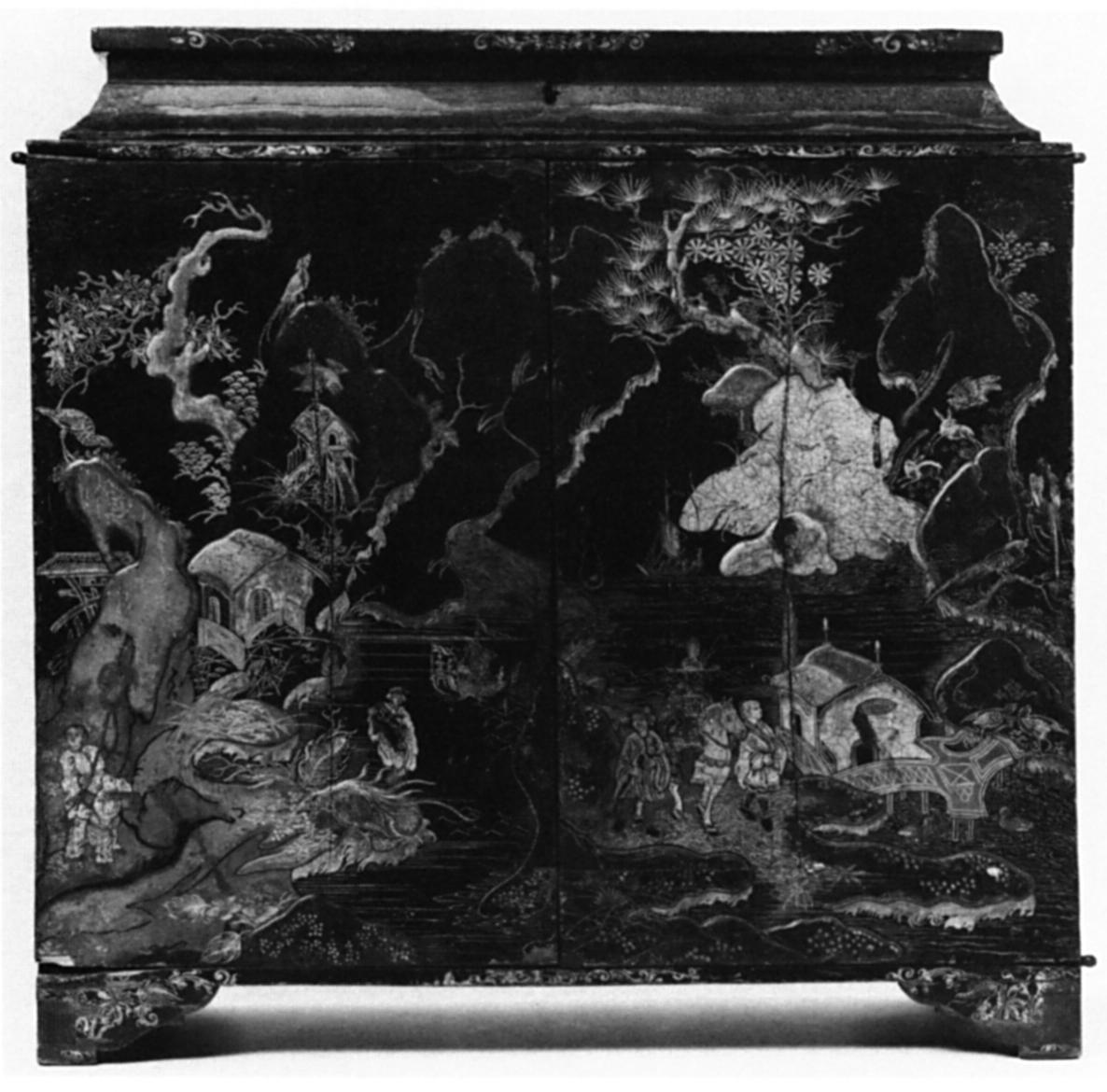Belgium
by Vincent Cattersel
One of the oldest centers of lacquer making is identified as the city of Spa, nestled in the former Prince-Bishopric of Liège, currently located in the South of Belgium. Spa reached its fame as a 'natural wellness' due to its high number of natural springs in the 16th century and gained international recognition by the visits of royal figures like King Charles II of England, Queen Christina of Sweden, Tsar Peter the Great, and Joseph II of Austria. During the 17th century, the locals of Spa developed a particular craft tradition that started with crafting walking sticks, tailored to visitors that were undertaking trips to the natural springs across the hilly terrain. Soon after, presumably under the pulse of the increasing numbers of visitors and related revenue potential, local artisans diversified their production from walking sticks to various types of commodities that catered to diverse budgets for the tourists. For instance, powder boxes, quadrille boxes, cabinets, toilet sets finished with a monochrome European lacquer layer (black, blue, green, red) and decorated with decorative Far Eastern or European motifs and scenery. These objects were catered to diverse budgets, from single coloured lacquer boxes with 'sprinkled gold' to elaborately painted Far Eastern or domestic scenery, to blue lacquer created with ultramarine (ed. at that time a very costly pigment) decorated with delicate scenes in gold-paint (shell-gold).
During the mid-17th century, the aesthetics of these Spa lacquer wares, or 'Bois de Spa' or 'Jolités de Spa', were aimed at replicating the unique qualities and decorative technology of Far Eastern lacquerwares: lustrous surfaces adorned with metal powders/leafs, paint to (re)create intricate exotic motives. Initially, the Far Eastern designs were copied from import lacquer wares but soon after, the wooden items were adorned with mixed European-Eastern or full-fledged European designs (See Fig. 16).

From the mid-17th century onwards, numerous cities in current Belgium were producing lacquer wares, yet, on a varying scale. For instance, the city of Antwerp gained international fame for its production of art cabinets and table cabinets. While most often these pieces were decorated with exotic and luxurious materials such as turtle shell, exotic woods (ebony, pallisander, etc), few were decorated with European lacquers. Among those are the Flemish cabinets described by De Kesel (1991) and De Kesel and Dhont (2012). Within this group we distinguish two types:
(1) Cabinets combining the aforementioned exotic materials with an elaborate floral decoration executed in a brown-yellow, red, and green coloured lacquer embedding pieces of mother-of-pearl and white particles (marble?, see Fig. 17, Fig. 18).


(2) Another type is fully finished with European black lacquer imitating Far Eastern designs. An exquisite example is the Scharloth's cabinet, preserved at the the Museum of Decorative Art in Copenhagen (see Fig. 19, Fig. 20). The inside of this cabinet is decorated with painted flowers in a vase (inside of the doors), while the drawer's fronts are adorned with needlework (embroideries).


